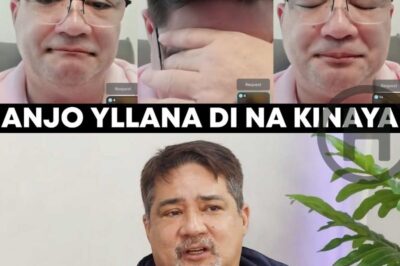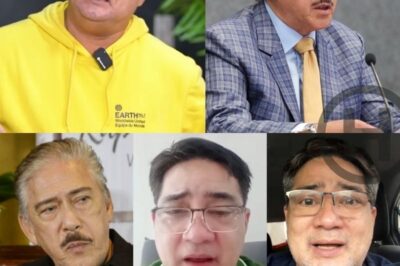Published: November 6, 2025
Introduction
Two major entertainment events captured regional attention in late 2025—one centered on the Chinese performer Yu Menglong, the other involving Malaysian artist Namewee and a well-known influencer. Both incidents prompted intense public interest, rapid social-media mobilization, and vigorous official responses. As coverage swelled to tens of billions of impressions across platforms, observers asked whether the stories were independent or whether their timing served broader narrative or strategic purposes. This article examines each situation in turn, maps the digital surge of attention, and explores whether there is more than coincidence at work.
Table of Contents
-
The Rise and Profile of Yu Menglong
Namewee: A Controversial Figure in Context
The Sequence of Events Surrounding Yu Menglong
The Hotel Incident and Legal Developments in Malaysia
Digital Attention and the Metrics of Virality
Industry Practices, Informal Rules, and Power Dynamics
Public Voices and Expert Perspectives
Institutional Impact and Audience Trust
Comparative Cases and Global Parallels
Looking Ahead: Transparency, Governance, and Media Literacy
Part I — The Rise and Profile of Yu Menglong
Yu Menglong emerged as a prominent actor and singer in the 2010s, earning a broad fan base through streaming dramas and music projects. Known for his approachable public persona, he attracted millions of followers and significant commercial opportunities. In recent years, however, reports suggested his career trajectory had stalled. Industry insiders hinted at disagreements and conflicts behind the scenes, and some speculated about pressures that can shape entertainment careers in tightly managed markets.
When news of an unexpected incident connected to Yu circulated, it immediately drew widespread attention—not only because of his celebrity but because of the contrast between his public image and the abruptness of the situation. The speed of official statements and the subsequent control of online narratives raised questions among fans and media watchers about transparency and the processes that follow high-profile incidents.
Part II — Namewee: A Controversial Figure in Context
Namewee, born Wee Meng Chee, has long occupied a combustible space between art and provocation. His work often challenges social norms and political taboos, generating both praise and condemnation across multiple countries. That history of boundary-pushing made any incident involving him likely to become a focal point for broader debates about expression, accountability, and cross-jurisdictional media dynamics.
An incident in Kuala Lumpur involving Namewee and a Taiwanese influencer triggered investigative action by local authorities. As legal matters unfolded, public interest broadened from a local criminal inquiry to regional conversations about celebrity conduct, legal procedures, and the role of online platforms in amplifying sensitive cases.
Part III — The Sequence of Events Surrounding Yu Menglong
According to reporting and public statements from acquaintances, the sequence of events associated with Yu involved a private social gathering followed by a serious incident at a residential location. Authorities classified the matter after an initial probe and announced their findings in a relatively short timeframe. That rapid closure prompted scrutiny.
Key questions raised by observers included why certain visual records were not released, why some witnesses remained out of public view, and why online commentary critical of the official account faced swift moderation. The intersection of a high-visibility figure, limited transparency, and aggressive content moderation created fertile ground for speculation and a sustained social-media campaign calling for fuller disclosure.
Part IV — The Hotel Incident and Legal Developments in Malaysia
In a separate development, an incident occurred in a hotel room in Kuala Lumpur involving a Taiwanese influencer. Following initial inquiries, local investigators reclassified the case to reflect new evidence and pursued legal steps that included detaining and charging a prominent entertainer for alleged possession and use of controlled substances. These legal actions were accompanied by media attention from multiple countries, given the cross-border profiles of the individuals involved.
The Malaysian authorities’ announcements and the legal process that followed became a major news item across regional platforms. Observers debated whether the handling of the situation reflected ordinary criminal procedure or whether additional contextual factors—such as political sensitivities—might shape investigative priorities and public messaging.
Part V — Digital Attention and the Metrics of Virality
Both incidents provoked rapid and massive engagement across social platforms. Content related to the Yu-linked incident reportedly accumulated extraordinarily high view counts—numbers that underscored how entertainment news can outpace traditional political reporting. The Malaysia-centered legal case likewise dominated search and discussion trends in the region.
This digital attention had two notable effects. First, it created intense pressure on official actors to respond quickly, sometimes before investigations were complete. Second, the volume of posts, reposts and commentary made it difficult to separate verified facts from rumor. The result was an environment in which narrative control—through timely statements or content moderation—could shape public perception as much as the underlying events themselves.
Part VI — Industry Practices, Informal Rules, and Power Dynamics
Longstanding conversations about informal industry practices—often described as “hidden rules” by insiders—reappeared in both contexts. In tightly regulated or networked entertainment markets, unwritten expectations and power imbalances can influence careers and exposures. Allegations that a professional resisted such expectations circulated in connection with one incident; the other event prompted debate about whether a provocative public profile made an individual more vulnerable to law-enforcement scrutiny.
Analysts caution against simplistic causal claims: many variables influence how high-profile matters are addressed. Nonetheless, the two incidents together highlight how industry dynamics, legal frameworks, and state approaches to public order can intersect in ways that affect both individuals and broader cultural narratives.
Part VII — Public Voices and Expert Perspectives
Public reaction ranged from heartfelt concern to fierce debate. Fans used social media to memorialize work and push for accountability. Commentators and media experts emphasized the role of information management, noting patterns where limited disclosure and aggressive moderation tend to amplify distrust.
Legal experts pointed to procedural norms in cross-border cases, and media scholars highlighted the challenges of verification in high-speed information environments. Psychologists and communications specialists warned that viral attention can distort context and pressure institutions to act hastily, with potential consequences for due process.
Part VIII — Institutional Impact and Audience Trust
Both entertainment ecosystems and public institutions felt reverberations. Within the entertainment sector, managers and talents reassessed risk—opting for greater caution in engagements, statements, and personal interactions. For regulators and media platforms, the incidents underscored the tension between managing harmful content and preserving open discourse.
For the public, repeated instances of incomplete information and heavy moderation erode trust. When official accounts appear incomplete and independent sources are suppressed or unreliable, audiences increasingly turn to rumor and conjecture. That shift complicates constructive dialogue and undermines confidence in institutional transparency.
Part IX — Comparative Cases and Global Parallels
Similar patterns arise globally: sudden, attention-grabbing incidents involving well-known figures often spur intense media cycles that overshadow other public concerns. From regional entertainment markets to international celebrity scenes, the combination of social platforms, rapid sharing, and selective official disclosure produces recurring dynamics: rapid attention surges, contested narratives, and calls for accountability.
Comparative analysis suggests that while the specifics of each case differ—legal frameworks, cultural context, and institutional incentives—the structural interplay between attention economy forces and governance responses is widely shared.
Part X — Looking Ahead: Transparency, Governance, and Media Literacy
Immediate next steps in both instances involve ongoing inquiries, legal proceedings, and continued public conversation. More broadly, the episodes underline several priorities for the future:
• Strengthening transparent investigative practices that balance privacy, fairness, and public interest.
• Developing platform policies that improve verification and reduce the spread of harmful or misleading speculation without unduly restricting legitimate public concern.
• Encouraging media literacy so audiences can better evaluate sources, context and the limits of available information.
• Reassessing industry norms to protect individuals while enabling accountability where warranted.
Whether these incidents represent coincidence, tactical diversion, or a mix of both, they demonstrate how modern media ecosystems can amplify certain narratives and obscure others. How institutions respond will shape public trust for years to come.
Conclusion
The high-profile episodes involving Yu Menglong and Namewee illustrate the power of modern attention economies and the complex interactions of celebrity, law, and public discourse. In environments where information flows are tightly managed and social platforms rapidly amplify sensation, audiences face the challenge of discerning fact from framing.
These events, taken together, do not simply chronicle individual crises; they point to systemic questions about transparency, governance and the ethics of influence. The path forward requires institutions that can communicate clearly, platforms that can moderate responsibly, and publics equipped to navigate an information landscape where visibility is both opportunity and vulnerability.
Related Articles (titles only; external links omitted in the main text)
Sudden High-Profile Cases in Entertainment: Patterns and Implications
Influencer Incidents and Legal Responses in Southeast Asia
Namewee: Art, Provocation and the Boundaries of Public Speech
When Social Media Outpaces Institutions: Verification and Trust in the Digital Age
News
From Surprise to Backlash: KathNiel Fans Respond to Kaila Estrada and Daniel Padilla’s Relationship Reveal (NH)
Published: November 6, 2025 Introduction In early 2025, Filipino entertainment news was electrified by a high-profile announcement: Daniel Padilla, one…
After the Incident: Anjo Yllana Breaks Down in Tears Over Recent Controversy — What Happened? (NH)
After the Incident: Anjo Yllana Breaks Down in Tears Over Recent Controversy — What Happened? Published: November 6, 2025 Introduction…
Anjo Yllana’s Statements Against Sen. Tito Sotto: The Controversy and Retraction (NH)
Anjo Yllana’s Statements Against Sen. Tito Sotto: The Controversy and Retraction Published: November 6, 2025 Introduction The Philippine entertainment industry…
What Coco Martin Did to His Co-Stars Left Everyone Speechless (NH)
Published: November 6, 2025 Introduction Sa mundo ng showbiz sa Pilipinas, madalas ay nasisilip ng publiko ang karera, proyekto, o…
Janice De Belen Walks Out After Spotting Ex-Husband John Estrada at Public Event (NH)
Janice De Belen Walks Out After Spotting Ex-Husband John Estrada at Public Event Published: November 6, 2025 Introduction A recent…
Joey De Leon Responds to Anjo Yllana’s Allegations: The Eat Bulaga Controversy Unfolded (NH)
Joey De Leon Responds to Anjo Yllana’s Allegations: The Eat Bulaga Controversy Unfolded Published: November 6, 2025 Introduction In a…
End of content
No more pages to load












